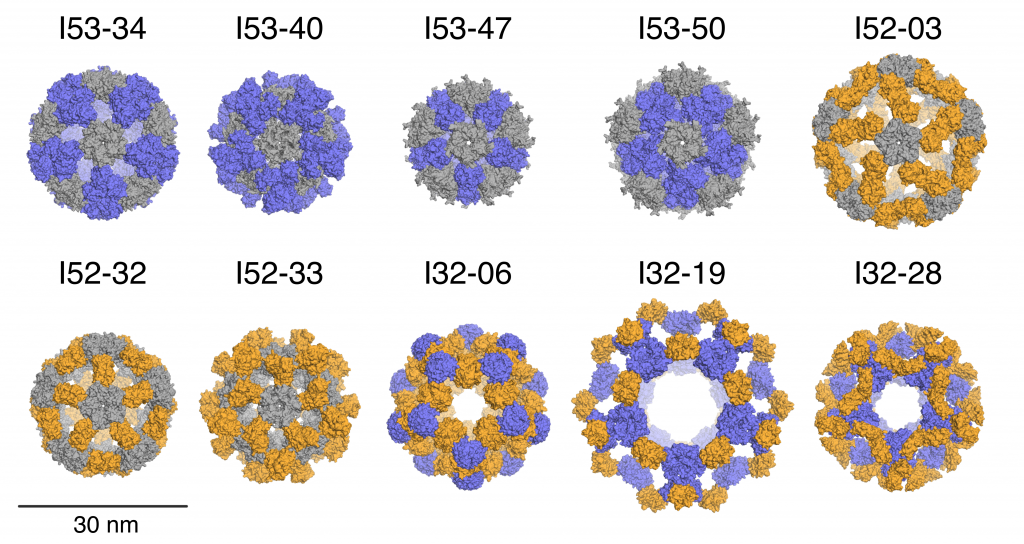Table Of Content
- Combination of Theoretical and Experimental Approaches for the Design and Study of Fibril-Forming Peptides
- Fold family design
- nature.com sitemap
- Membrane scoring functions
- Designing hydrogels with the DeForest Lab
- An engineered ScCas9 with broad PAM range and high specificity and activity
- Backbone design by machine learning

After the ETH researchers had produced these molecules in the lab, colleagues at Roche subjected them to a variety of tests. These showed that the new substances are indeed stable and non-toxic right from the start. Together with researchers from the pharmaceutical company Roche and other cooperation partners, the ETH team tested the new process and demonstrated what it is capable of. The scientists searched for molecules that interact with proteins in the PPAR class -- proteins that regulate sugar and fatty acid metabolism in the body.
Combination of Theoretical and Experimental Approaches for the Design and Study of Fibril-Forming Peptides
The first new alpha-beta protein, with a fold not previously observed in nature, was assembled from fragments from the PDB (33). Subsequent careful analyses of natural protein architectures led to the design of different alpha-beta proteins (30), including a symmetrical artificial TIM barrel (34), and all-beta proteins (29, 31). The “de novo” protein design describes the generation of new proteins with sequences unrelated to those in nature based on physical principles of intramolecular and intermolecular interactions (1). Although most current contributions to the de novo design focus on new structures, efforts in the field are increasingly directed toward designing new biological functions and their applications (1, 2). Exciting recently designed functions include inhibitors of viral infections (3, 4), immune system modulators (5, 6), self-assembling biomaterials (7, 8, 9), sense-and-respond signaling systems (10, 11, 12, 13), and protein logic gates (14, 15).
Fold family design
“In three rounds of iteration, we were able to go from complete disappearance of the protein after four weeks to retention of effectively 95% activity,” he says. Helical bundles were the first type of protein fold designed de novo at atomic accuracy (22, 57). Owing to their regularity, backbone structures of coiled-coil helical bundles can be sampled near exhaustively by Crick’s parameterization (21). The availability of a method to systematically sample helical bundle backbones and the high stability (58) of the fold make helical bundles a good model system for designing a broad scope of functions such as ligand binding (25), ion transport (24), and switches (15). More details on recent progress of the coiled-coil design can be found in a review by Woolfson (59). RFdiffusion solves 23 of the 25 benchmark problems, compared to 15 for Hallucination and 19 for RFjoint Inpainting (Fig. 4a,b).
nature.com sitemap
From Hecht, M. H.; Richardson, J. S.; Richardson, D. C.; Ogden, R. C. Science 1990, 249, 884–891. The problem of minimizing ET is an NP-hard problem.[14][20][21] Even though the class of problems is NP-hard, in practice many instances of protein design can be solved exactly or optimized satisfactorily through heuristic methods. As we continue to unlock the secrets of proteins and learn to harness their potential, the possibilities for protein design are virtually limitless. Protein design, with its interdisciplinary nature and wide-ranging applications, is poised to reshape the future of synthetic biology.
Membrane scoring functions
Similar to the ligand binding–site design, designing protein binders to target proteins requires high accuracy scoring and sampling. A workaround to these challenges is using binding motifs from known protein–protein interfaces. Proteins that bind to influenza hemagglutinin and botulinum neurotoxin B (3) were designed by building known helical motifs that bind to the intended targets onto de novo designed small protein scaffolds (64).
Designing hydrogels with the DeForest Lab
Notably, the structure prediction neural network from TR-Rosetta (42) can be repurposed for sequence optimization (109). For a protein sequence, the TR-Rosetta neural network predicts distances, angles, and dihedrals for every pair of residues. A loss function is defined as the difference between the prediction and the target structure. The gradient of the loss is then back-propagated through the TR-Rosetta neural network to optimize the sequence.
An engineered ScCas9 with broad PAM range and high specificity and activity

A new computer process developed by chemists at ETH Zurich makes it possible to generate active pharmaceutical ingredients quickly and easily based on a protein's three-dimensional surface. In North America, the protein design and engineering market is likely to register a significant revenue share and develop at a rapid CAGR over the forecast period because chronic disease rates are rising and protein-containing medications are being used more often than non-protein-containing ones. Schematic illustration showing both the sequence and proposed three-dimensional structure of the designed four-helix bundle protein, Felix.

The coordinates are then transformed into constraints for the Rosetta FunFolDes (73) method to build all-atom models. RF has recently been extended to nucleic acids and protein–nucleic acid complexes55, which should enable RFdiffusion to design nucleic acid binding proteins and perhaps folded RNA structures. Extension of RF to incorporate ligands should similarly enable extension of RFdiffusion to explicitly model ligand atoms, and allow the design of protein–ligand interactions. Several important design challenges involve the scaffolding of several copies of a functional motif in symmetric arrangements.
“Folded” refers to designs that were characterized by CD and/or NMR spectroscopy or had an experimentally determined structure, displayed the expected oligomerization state (if measured), and/or were functional (if designed to have a function). Several design studies have addressed the problem of the protein–protein interface design where both sides of each interface are designed, leading to protein assembly (Fig. 5C). Homo-oligomers with cyclic symmetries were designed by systematic enumeration of arrangements of the monomers followed by the interface design (139).
Scientists are now rapidly moving toward a future in which they can apply careful computational analysis to infer the underlying principles governing the structure and function of real-world proteins and apply them to construct bespoke proteins with functions devised by the user. Lucas Nivon, CEO and cofounder of Cyrus Biotechnology, believes the ultimate impact of such in silico-designed proteins will be massive and compares the field to the fledgling biotech industry of the 1980s. “I think in 30 years 30, 40 or 50% of drugs will be computationally designed proteins,” he says. In the dark state, the peptide ligand is partially in a helical conformation, and binding to ePDZ is blocked.
We next investigated the use of RFdiffusion for scaffolding protein structural motifs that carry out binding and catalytic functions, in which the role of the scaffold is to hold the motif in precisely the 3D geometry needed for optimal function. In RFdiffusion, we input motifs as 3D coordinates (including sequence and sidechains) both during conditional training and inference, and build scaffolds that hold the motif atomic coordinates in place. Many deep-learning methods have been developed recently to address this problem, including RFjoint Inpainting4, constrained Hallucination4 and other DDPMs5,8,29.
Deep learning for new protein design - Phys.org
Deep learning for new protein design.
Posted: Thu, 03 Aug 2023 07:00:00 GMT [source]
For each combination of force field and water model, χ2 quantifies the agreement between simulation and experiment based on the 524 parameters, indicated by the color of the square. A smaller value of χ2 (darker blue) indicates a greater agreement between prediction and experiment. Note the differences between the different force fields with the same water models, and between different water models with the same force field. Reprinted with permission from Beauchamp, K. A.; Lin, Y. S.; Das, R.; Pande, V. S. Journal of Chemical Theory and Computation 2012, 8, 1409–1414. In rational protein design, proteins can be redesigned from the sequence and structure of a known protein, or completely from scratch in de novo protein design. In protein redesign, most of the residues in the sequence are maintained as their wild-type amino-acid while a few are allowed to mutate.
For example, collagen, the most abundant protein in the human body, provides structural integrity to our skin, bones, and connective tissues. Meanwhile, insulin, a hormone produced by the pancreas, helps regulate blood sugar levels by signaling cells to take in glucose from the bloodstream.

No comments:
Post a Comment